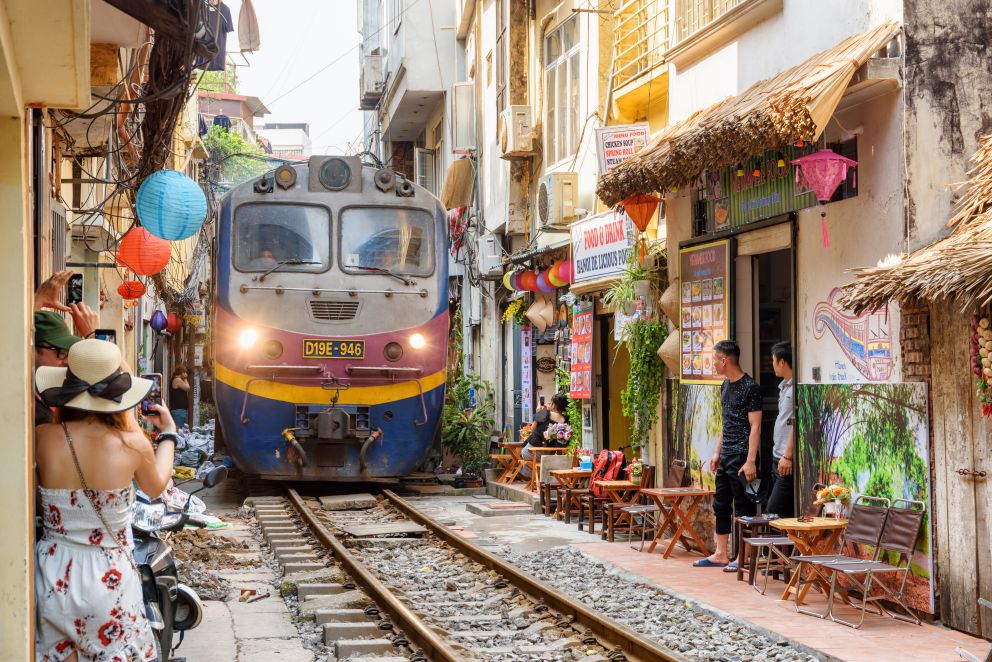
Vietnam Entry Requirements Your Complete Guide
Are you planning a trip to Vietnam but feeling overwhelmed by the entry requirements? Don’t worry, you’re not alone. With constantly changing regulations and different visa options, it can be confusing to navigate the Vietnam entry requirements. This comprehensive guide will provide all the information you need to know before traveling to Vietnam, including visa requirements, documentation needed, health requirements, customs regulations, and more. So, let’s dive in and make sure you’re fully prepared for your trip to Vietnam.
Visa Requirements for Entering Vietnam

The first step to entering Vietnam is determining whether or not you need a visa. The visa requirements for Vietnam are based on your nationality and the duration of your stay. Citizens of 80 countries, including the US, Canada, Australia, and most European countries, can enjoy visa-free entry for stays up to 15 days. However, if you plan to stay longer than 15 days or if you’re from a non-exempt country, you’ll need to apply for a visa before your trip.
Vietnam Entry Requirements for Malaysian Citizens
Malaysian citizens are eligible for visa-free entry to Vietnam for stays up to 30 days. If you plan to stay longer than 30 days, you’ll need to apply for a visa in advance. Malaysia is also one of the eligible countries for an e-visa or visa on arrival.
Vietnam Entry Requirements for UK Citizens
UK citizens are also eligible for visa-free entry to Vietnam for stays up to 15 days. For longer stays, a visa must be obtained in advance. UK citizens can also apply for an e-visa or visa on arrival.
Vietnam Entry Requirements for US Citizens
US citizens can enter Vietnam without a visa for stays up to 15 days. For longer stays, a visa must be obtained in advance. US citizens are also eligible for an e-visa or visa on arrival.
Vietnam Entry Requirements for Canadian Citizens
Canadian citizens can enter Vietnam without a visa for stays up to 15 days. For longer stays, a visa must be obtained in advance. Canada is also one of the eligible countries for an e-visa or visa on arrival.
Vietnam Entry Requirements for Australian Citizens
Australian citizens are granted visa-free entry to Vietnam for stays up to 15 days. For longer stays, a visa must be obtained in advance. Australia is also eligible for an e-visa or visa on arrival.
Vietnam Entry Requirements for New Zealand Citizens
New Zealand citizens do not need a visa for stays up to 15 days in Vietnam. For longer stays, a visa must be obtained in advance. New Zealand is also eligible for an e-visa or visa on arrival.
Vietnam Entry Requirements for Indian Citizens
Indian citizens must obtain a visa before entering Vietnam. They are not eligible for visa-free entry or e-visas. The visa application process for Indian citizens can take longer than other countries, so it’s recommended to apply well in advance.
Vietnam Entry Requirements for EU Citizens
Citizens of most European countries (excluding Russia) can enter Vietnam without a visa for stays up to 15 days. For longer stays, a visa must be obtained in advance. Most EU citizens are also eligible for e-visas or visas on arrival.
Vietnam Entry Requirements for Irish Passport Holders
Irish passport holders can enter Vietnam without a visa for stays up to 15 days. For longer stays, a visa must be obtained in advance. Ireland is also eligible for an e-visa or visa on arrival.
….
Types of Visas Available for Vietnam

If you need to obtain a visa for your trip to Vietnam, there are several options available depending on your purpose of visit and duration of stay.
- E-visa: This is a convenient option for citizens of eligible countries planning short tourist trips (maximum 30 days). The application can be done online and the visa is issued electronically. However, not all nationalities are eligible for an e-visa.
- Visa on arrival (VOA): This option allows you to apply for a visa upon arrival at major airports in Vietnam. You’ll need to pre-arrange a visa approval letter before traveling. The process is simple and straightforward, but it’s important to note that this type of visa is only valid for air travel.
- Embassy visa: For longer stays, business trips, or other specific purposes, you can apply for a visa at the Vietnamese embassy or consulate in your home country. This visa must be obtained before your trip and may require additional documentation.
It’s important to note that the type of visa you choose will depend on your individual circumstances and the purpose of your visit. It’s recommended to research and compare the different options to determine which one is best for you.
Applying for a Vietnam Visa: Online vs. On Arrival

Both online and on-arrival visa applications have their advantages and disadvantages. Let’s take a closer look at each option to help you decide which one is right for you.
Online Visa Application
The e-visa application process is simple and can be done from the comfort of your own home. All you need is a valid passport, a digital photo, and a credit/debit card for payment. The processing time for an e-visa is typically 3 working days and the cost is $25 USD.
Pros:
- Convenient and time-saving.
- No need to visit an embassy or consulate.
- Can be used for both air and land travel.
Cons:
- Not all nationalities are eligible.
- Limited to a maximum stay of 30 days.
- Cannot be extended or changed once issued.
On-Arrival Visa
To obtain a visa on arrival, you’ll need to pre-arrange a visa approval letter through a travel agency or through the official Vietnam Immigration Department website. You’ll then present this letter at the visa on arrival counter at the airport along with your passport, photo, and visa fee payment (in cash). The processing time for a visa on arrival is typically 2 working days and the cost is $25 USD (for single entry) or $50 USD (for multiple entries).
Pros:
- Can be obtained without visiting an embassy or consulate.
- Suitable for those who have last-minute travel plans.
- Can be used for both air and land travel.
Cons:
- Only valid for air travel.
- Long wait times at the airport.
- Risk of rejection if the supporting documents are not in order.
The decision between an e-visa and visa on arrival ultimately depends on your personal preferences and needs. If you have more time and prefer to avoid any potential hassles at the airport, an e-visa may be the better option. However, if you have a last-minute trip or will only be traveling by air, a visa on arrival may be a suitable choice.
Documentation Needed for a Vietnam Visa Application

The documentation needed for a Vietnam visa application varies depending on the type of visa and your nationality. However, here are some general requirements:
- Valid passport: Your passport must have at least 6 months of validity remaining and blank pages for the visa sticker.
- Digital photo: A recent color photo (taken within the last 6 months) with a white background is required for both e-visa and visa on arrival applications. Make sure your face is clearly visible and there are no obstructions such as hats or sunglasses.
- Supporting documents: Depending on your purpose of visit, additional supporting documents may be required. For example, if you’re applying for a business visa, you may need to provide a letter from your company or an invitation letter from a Vietnamese business partner.
It’s important to check the specific requirements for your nationality and type of visa before submitting your application to avoid any delays or rejections.
Visa Fees and Processing Time
The cost and processing time for a Vietnam visa can vary depending on your chosen type of visa and processing method. Here’s a general overview:
- E-visa: The cost is $25 USD and the processing time is typically 3 working days.
- Visa on arrival: The cost is $25 USD (single entry) or $50 USD (multiple entries) and the processing time is typically 2 working days. Additional fees may apply if you use a travel agency for your visa approval letter.
- Embassy visa: The cost and processing time may vary depending on your nationality and the embassy/consulate you apply at. It’s best to contact the embassy directly for this information.
Passport Validity Requirements for Entering Vietnam
As mentioned earlier, your passport must have at least 6 months of validity remaining from the date of entry into Vietnam. This means that if your passport is expiring within the next 6 months, you’ll need to renew it before traveling to Vietnam. It’s recommended to have at least one blank page in your passport for the visa sticker.
Health Requirements and Vaccinations for Entering Vietnam
There are currently no mandatory vaccinations for entering Vietnam. However, it’s always recommended to be up-to-date with routine vaccinations such as measles-mumps-rubella (MMR), diphtheria-tetanus-pertussis, varicella (chickenpox), polio, and influenza. It’s also advisable to consult with your doctor about any additional vaccinations or health precautions you may need based on your individual health and planned activities in Vietnam.
Customs Regulations for Entering Vietnam
Vietnam has strict customs regulations, and it’s important to be aware of these before your trip. Some prohibited items include weapons, guns, explosives, drugs, and pornography. It’s also prohibited to bring in more than the equivalent of $5,000 USD in cash without declaring it.
You are allowed to bring in personal belongings such as cameras, laptops, and souvenirs for personal use. However, any items deemed as commercial goods may be subject to import/export taxes. It’s best to check with the Vietnam Customs Department for a detailed list of regulations and restrictions.
Extension of Stay Options for Visitors in Vietnam
If you wish to extend your stay in Vietnam, there are a few options available depending on your visa type and purpose of visit.
- E-visa: The e-visa is only valid for single entry and cannot be extended. You’ll need to leave Vietnam and apply for a new e-visa if you wish to re-enter.
- Visa on arrival: This type of visa can be extended at the Vietnam Immigration Department. The process typically takes 5-7 working days and costs vary depending on the length of extension.
- Embassy visa: If you have a visa obtained from an embassy, you can apply for an extension at the Immigration Department or the agency who sponsored your visa. The cost and processing time may vary depending on the embassy/agency.
It’s important to note that overstaying your visa in Vietnam can result in penalties and difficulties when departing the country. It’s recommended to consult with the Immigration Department or a travel agency for more information on extending your stay.
Frequently Asked Questions about Vietnam Entry Requirements
- Do I need a visa to enter Vietnam? The visa requirements for Vietnam depend on your nationality. Citizens of 80 countries, including the US, Canada, Australia, and most European countries, can enjoy visa-free entry for stays up to 15 days. However, for longer stays or if you’re from a non-exempt country, you’ll need to apply for a visa before your trip.
- Can I extend my e-visa? No, the e-visa is only valid for single entry and cannot be extended. You’ll need to leave Vietnam and apply for a new e-visa if you wish to re-enter.
- How long does it take to process a visa on arrival? The processing time for a visa on arrival is typically 2 working days.
- What documents do I need for a visa application? You will need a valid passport, a digital photo, and depending on your purpose of visit, additional supporting documents such as an invitation letter or business license.
- Do I need any vaccinations before traveling to Vietnam? While there are currently no mandatory vaccinations for entering Vietnam, it’s recommended to be up-to-date with routine vaccinations and consult with your doctor about any additional vaccinations or health precautions.
Conclusion
Navigating entry requirements can be a daunting task, but with this comprehensive guide, you should now have all the information you need for a smooth and hassle-free arrival in Vietnam. Remember to check the specific requirements for your nationality and type of visa before submitting your application, and always allow enough time for processing. With proper planning and preparation, you’ll be ready to enjoy all that Vietnam has to offer. Safe travels!
